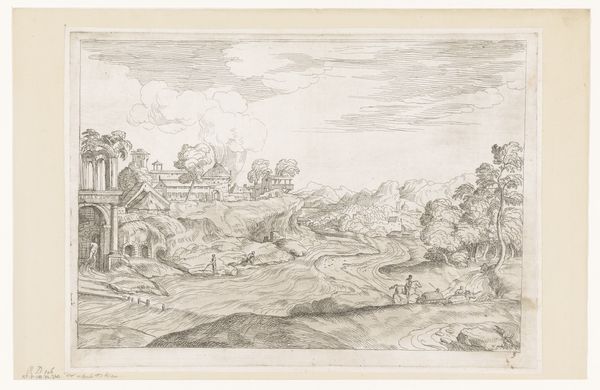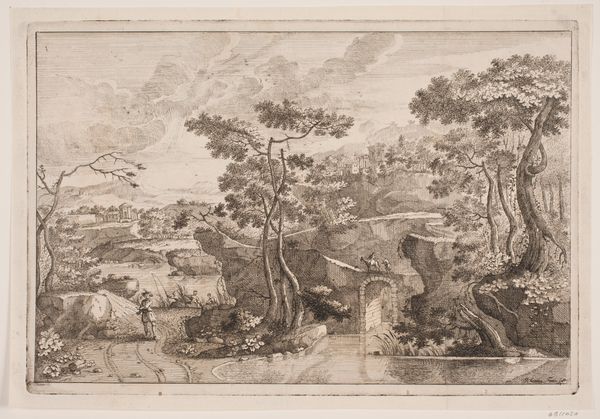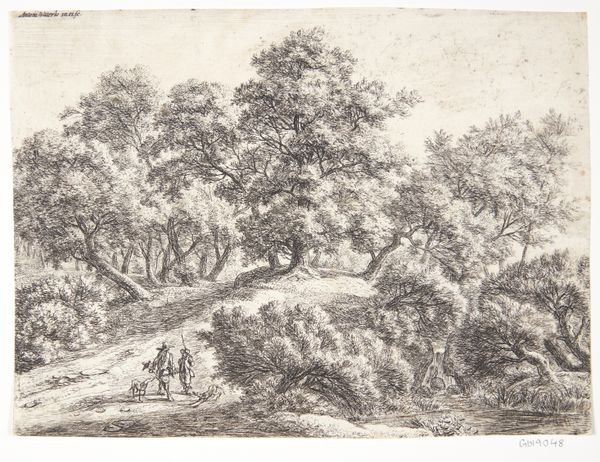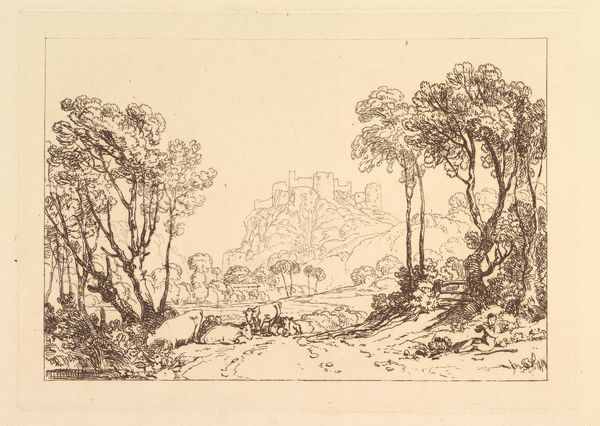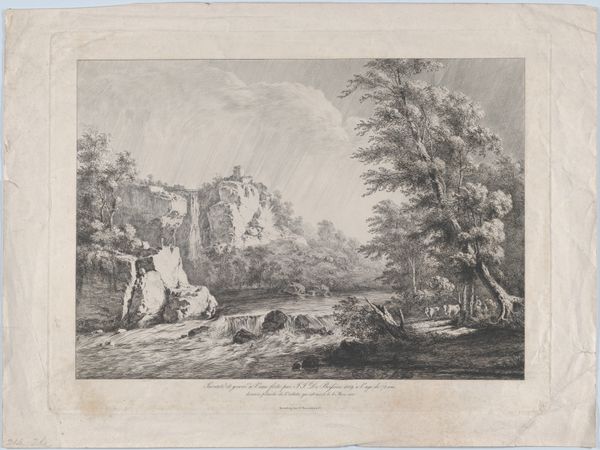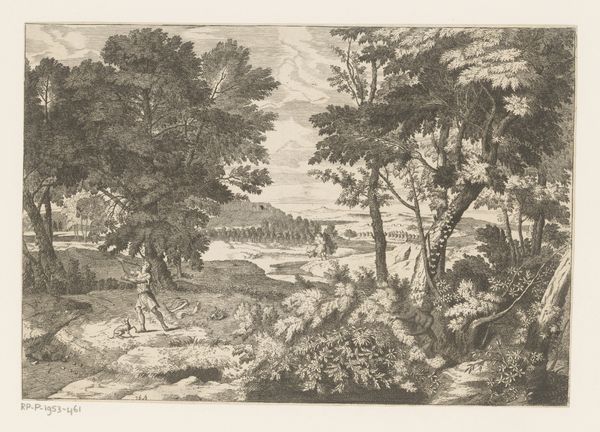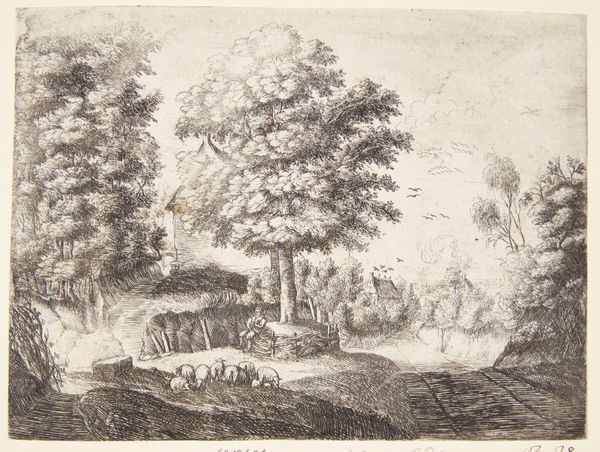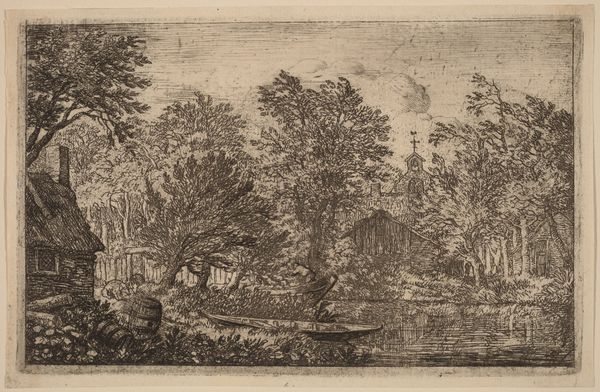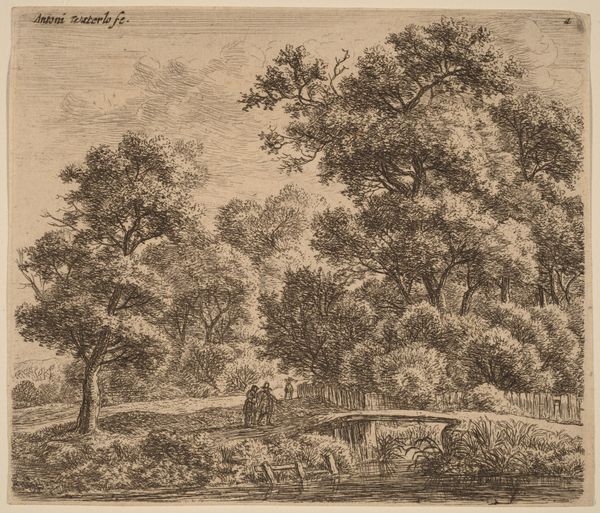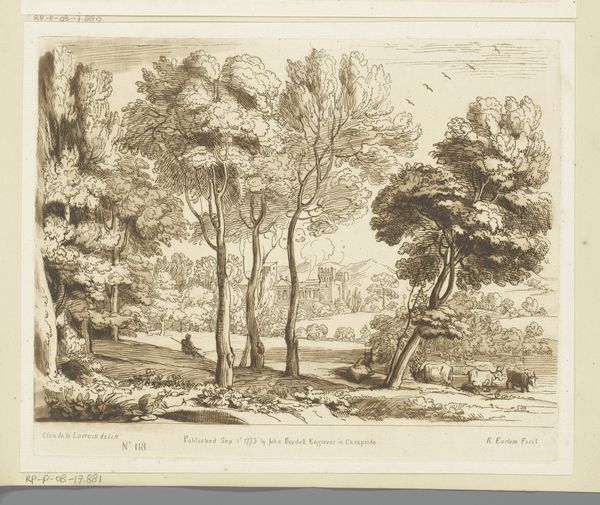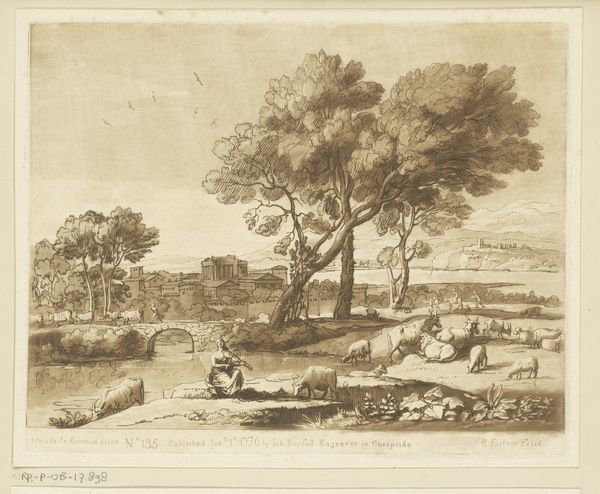
drawing, print, etching, engraving
#
drawing
#
ink painting
# print
#
etching
#
landscape
#
forest
#
coloured pencil
#
engraving
Dimensions: Sheet: 6 3/16 × 8 3/8 in. (15.7 × 21.3 cm) Plate: 5 1/8 × 7 3/8 in. (13 × 18.8 cm)
Copyright: Public Domain
Curator: This is "Entrance to the Forest of Fontainebleau," an etching by Jean-Jacques de Boissieu, created in 1764. It captures a scene just outside of Paris. Editor: It feels like a glimpse into a simpler time. I’m immediately drawn to the textures; the dense cross-hatching in the trees and the much lighter touch in the sky. It gives the landscape a sort of palpable weight. Curator: Absolutely. Landscape prints like these were quite popular in the 18th century. They catered to the growing interest in nature and the picturesque, feeding into a culture that idealized rural life even as urban centers expanded. Editor: The means of production would have influenced its accessibility, too. As a print, multiple impressions could be made, making it more available than a painting. Was this intended for a broad audience? How were these distributed? Curator: Printmaking certainly democratized art, making it accessible to a wider middle class. We know artists like Boissieu often sold their prints directly or through print shops, tapping into a burgeoning art market. The format also allowed them to circulate as part of larger publications or albums. Editor: There's a compelling tension between the precision of the engraving and the apparent wildness of the forest. You can see the labor involved in capturing the texture and form of each leaf. I wonder what tools and techniques he favored. Curator: Boissieu was known for his skill with the etching needle. He meticulously layered lines to create depth and shadow, revealing the grandeur of the forest but also demonstrating artistic virtuosity. It reflects an elite artistic skill marketed towards bourgeois aspirations. Editor: Looking closer, I see the small figures traveling along the road—a reminder that this is a working landscape, not just a scenic vista. What would that travel and those journeys mean to the average person purchasing a print of the era? Curator: It underscores that idealized balance between nature and culture so valued then, providing both an escape from and a connection to the landscape. Editor: It does give one much to consider, especially regarding craft and consumerism. Curator: Yes, it is always more than meets the eye with these artworks!
Comments
No comments
Be the first to comment and join the conversation on the ultimate creative platform.

